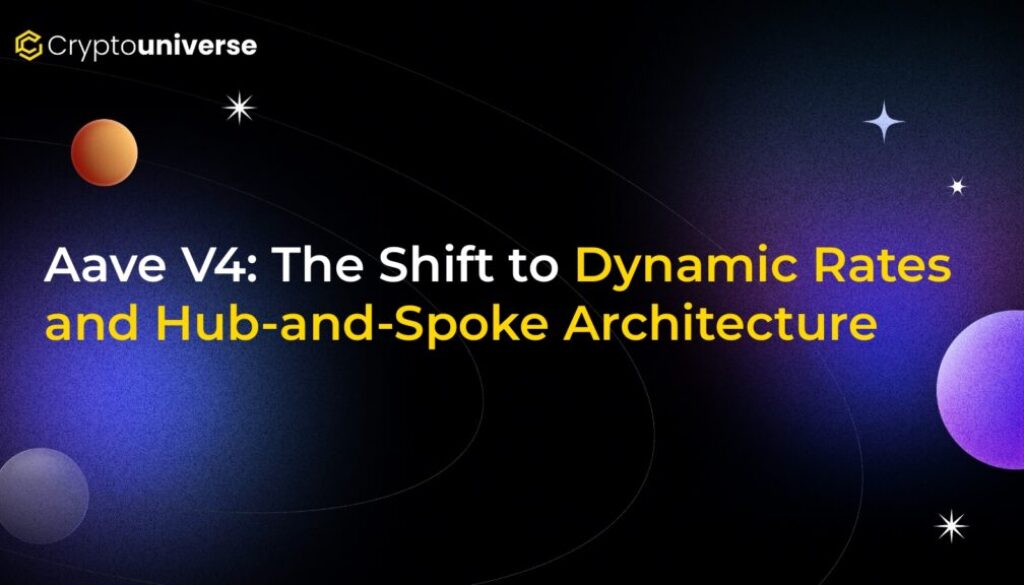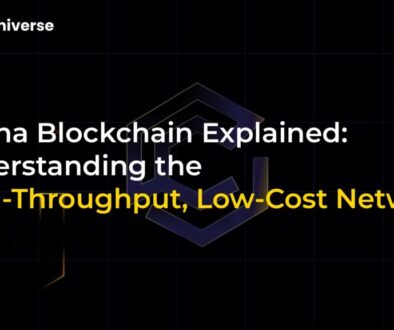Aave V4: The Shift to Dynamic Rates and Hub-and-Spoke Architecture

Aave V4: A New Chapter for Decentralized Finance
The world of Decentralized Finance (DeFi) is in a constant state of evolution, and Aave has consistently been at the forefront of innovation. Now, the lending giant is preparing for its next major leap: Aave V4. This isn’t just another incremental update; it’s a fundamental redesign aimed at enhancing capital efficiency, risk management, and user experience. At the heart of this transformation are two key concepts: a revolutionary hub-and-spoke architecture and dynamic interest rates. Let’s dive into what these changes mean for DeFi users, from individual investors to small and medium-sized enterprises (SMEs) navigating Web3.
Unpacking the Hub-and-Spoke Model: Unifying Liquidity
One of the persistent challenges in DeFi is fragmented liquidity. As protocols expand across multiple blockchains and support numerous assets, capital can become siloed in different pools, reducing overall efficiency. Aave V4 tackles this head-on with its proposed hub-and-spoke architecture.
Think of it like a major airport. The “hub” is the central terminal where all the liquidity is pooled together. The “spokes” are the individual gates, each representing a distinct market with its own unique assets, risk parameters, and rules. This model offers several key advantages:
- Centralized Liquidity: By creating a single, unified liquidity layer, Aave can ensure deeper, more robust pools. This leads to better borrowing terms and less slippage.
- Tailored Risk Management: Each “spoke” can be customized. A market for blue-chip assets like ETH and WBTC can have different loan-to-value (LTV) ratios and liquidation thresholds than a market for more volatile, long-tail assets.
- Greater Capital Efficiency: Instead of being locked into one specific market, liquidity in the hub can be utilized across the entire ecosystem, ensuring capital is always working as hard as possible.
The Game Changer: Dynamic Interest Rates Explained
Perhaps the most significant change in Aave V4 is the move towards dynamic interest rates. Traditionally, interest rates in DeFi lending protocols are primarily determined by the utilization rate—how much of the available capital is being borrowed. While simple, this model doesn’t fully account for risk.
Aave V4 introduces a more sophisticated approach where interest rates will adjust based on multiple factors, including:
- Collateral Quality: The risk profile of the collateral you provide will directly impact your borrowing cost. High-quality, liquid assets will likely secure lower interest rates.
- Market Conditions: Rates will be able to respond to broader market volatility and liquidity, creating a more responsive and risk-aware system.
This shift effectively introduces a risk premium into DeFi lending, moving the protocol closer to the nuanced risk assessment models seen in traditional finance.
What Does Aave V4 Mean for SMEs and Web3 Businesses?
These architectural changes have profound implications, especially for SMEs and startups operating in the Web3 space. The new model presents both exciting opportunities and new challenges.
The Opportunity: Rewarding Quality Collateral
For businesses holding high-quality assets, Aave V4 could unlock more favorable borrowing conditions. Better-priced loans can lower the cost of capital, freeing up resources for growth, development, and managing operations like crypto payroll.
The Challenge: Navigating Volatility and Higher Costs
On the flip side, startups and SMEs that rely on their native tokens or other less-established assets as collateral may face hurdles. The dynamic interest rate model could mean:
- Higher Borrowing Costs: The inherent risk of more volatile collateral will likely translate into higher interest rates, making it more expensive to borrow.
- Unpredictable Expenses: Fluctuating rates tied to market conditions can make financial planning difficult. A sudden market downturn could cause borrowing costs to spike, putting pressure on a company’s treasury.
For businesses managing their finances on-chain, understanding and proactively managing these new dynamics will be crucial for survival and success.
Streamlining DeFi with the New Position Manager
Beyond the core architectural changes, Aave V4 is also set to improve user experience with a new Position Manager. This feature is designed to simplify complex interactions and save on transaction costs.
The Position Manager will allow users to batch multiple actions—such as supplying collateral, borrowing an asset, and managing repayments—into a single, automated transaction. This is a huge quality-of-life improvement that reduces gas fees and makes it easier to manage sophisticated DeFi positions, a welcome development for businesses handling frequent transactions.
The Road Ahead: A More Mature DeFi
Aave V4 represents a significant step in the maturation of the DeFi ecosystem. The move towards a unified liquidity layer with the
While these changes will require users, especially SMEs, to adapt their strategies, they ultimately pave the way for a more resilient and sophisticated decentralized financial system. As Aave rolls out this next-generation protocol, the entire DeFi landscape will be watching closely, ready to adapt to the new standard in on-chain lending.


